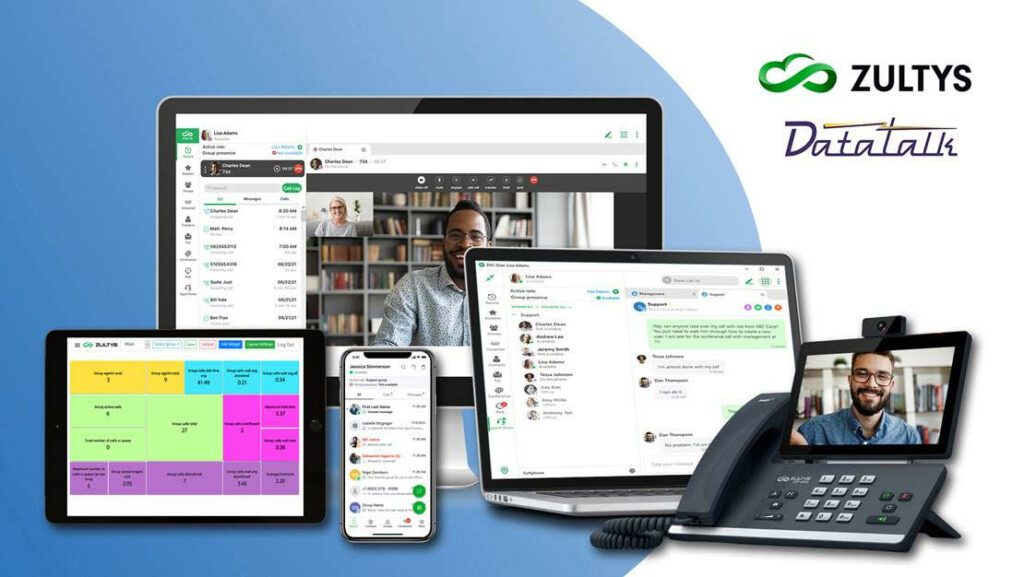Call routing is an essential feature of any business phone system, so here’s what entrepreneurs and company managers need to know about it!

Every business and call center understands just how fast calls can come rushing in on a daily basis, and from a business leader’s standpoint, it’s important to ensure that your call agents aren’t getting overwhelmed when call volumes skyrocket.
That’s why it’s so important for companies of all sizes to invest in an efficient call routing system that supports your team’s call management strategies. Below we’ll be taking a closer look at what call routing is, and how it can support your unique business needs!
What Exactly Is Call Routing?
Call routing is a feature found in many business phone systems that creates a caller queue when call volume exceeds the amount of available agents, and this feature also properly distributes callers to specific agents based upon predefined criteria and established system rules.
Call routing is also often referred to as an automatic call distribution (ACD) system, and it’s proven to be an invaluable tool for countless businesses in recent years!
Call Routing Benefits
Call routing offers a whole variety of benefits to business teams and call centers. First and foremost, it speeds up caller waiting times and helps guarantee a more favorable customer experience that values efficient resolutions. It also optimizes a company’s operational workflow, and improves agent efficiency productivity.
Some of the most common advantages associated with call routing include:
Customer Support
The main goal of any call center is to support customer needs, and call routing helps ensure customer satisfaction by keeping their wait times down and directing their calls to the correct agents.
Improved Employee Management
Call routing is also crucial for employee satisfaction, because it helps ensure that your call agents don’t get overwhelmed when inbound calls rapidly increase. This feature also guarantees that the workload between agents is evenly balanced, which subsequently improves their overall productivity and performance.
How Exactly Does Call Routing Work?
Call routing can be conducted through a variety of different methods, but these methods generally follow a similar process. Below are some of the common steps of call routing that can help you better understand how it works:
Qualifying Phase
A lot of businesses will utilize an interactive voice response (IVR) tool as one of the first steps of their routing process. This is also referred to as an auto attendant, and this automated menu will help your team better understand what each caller’s general purpose is as they answer a series of questions.
Call Queuing Phase
The IVR responses will immediately be forwarded into a phone system’s ACD system, which sets the caller up into a queue when necessary. Your company’s ACD will then organize calls based upon factors like waiting time, agent skills, and specific queries.
And what’s important to note here is that you’ll be able to predetermine what priorities are most important as a part of your routing rules, which can be adjusted as your call routing needs change.
Call Distribution Phase
When your incoming calls are properly queued, they’ll be routed to your most appropriate agents based upon your system’s rules.
An example of these rules would be talk-time distribution, which routes callers to the agents who’ve essentially been working the least throughout the course of a workday. This strategy is meant to help minimize the idle time of your call agents, and more evenly distribute call volume so no one gets too overwhelmed.
Establishing Your Call Routing Rules To Improve Customer Experience
There are many different call distribution strategies that businesses implement, and they each offer their own strengths and weaknesses. Below are some of the differing call routing methods that you should keep in mind:
Fixed Order Routing
This system will route your incoming calls to the first available agent on a first-come, first-served basis. If a certain agent isn’t currently available, the call will go to the next agent in line.
Skills-Based Routing
This system entails calls being routed to specific agents with unique skills to resolve a caller’s concerns.
Rotary Routing
This system will rotate call assignments between call center agents, which means that each agent will take a turn answering a call before the system returns back to the original agent.
Percentage Routing
This routing strategy will help you to allocate your company’s incoming calls based upon certain percentages to specific call center teams. This means you’ll essentially be able to delineate certain groups and have 50% of your calls go to Group A and 50% go to Group B, and so forth.
Talk-Time Routing
This call routing strategy will assign calls to agents who’ve received the least amount of talk-time among your clients, which goes a long way to make sure that everyone is equally participating and that no particular agent is being overwhelmed.
Time-Based Routing
This system will help ensure that incoming calls will go to agents based upon certain business hours or time of the day.
Reach Out To The Data Talk Team To Learn More About Our Call Routing Features!
Data Talk is the leading telecom business in central Ohio, and our team has decades of experience with supporting businesses with the industry’s most cutting-edge technology.
Our team is here to help support your company’s overall needs, and we understand just how important call routing is for countless businesses. Reach out to us online or give us a call at 614-784-7100 to speak with us about what you’d like to obtain with your call routing strategies!


Recent Comments